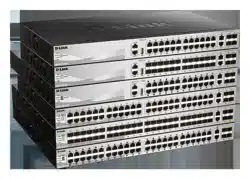Loading ...
Loading ...
Loading ...

DGS-3130 Series Layer 3 Stackable Managed Switch Web UI Reference Guide
241
Click the Back button to return to the previous window.
After clicking the Edit button in the Set Clauses column, the following page will appear.
Figure 6-86 Route Map (Set Clauses, Edit) Window
The fields that can be configured are described below:
Parameter Description
Action Select Add to add a new entry based in the information entered.
Select Delete to delete an entry based in the information entered.
IP Default Next Hop
Enter the default next-hop IP addresses in the spaces provided that will be
used to route the packet. This feature can be used to specify multiple default
next hop routers. If default next hops are already configured, the default next
hops configured later will be added to the default next hop list. When the first
default next hop router specified is down, the next default next hop router
specified is tried in turn to route the packet. Up to 8 default next-hop IP
addresses can be entered.
IP Next Hop Select the IP next hop type here. This feature is used to configure the next-hop
router to route the packet that passes the match clauses of the configured route
map sequence. Options to choose from are IP Address, Peer Address, and
Recursive.
• IP Address - Specifies the IP addresses of the next-hops to route the
packet. Enter the next-hop IP addresses in the spaces provided here.
Up to 8 next-hop IP addresses can be entered.
• Recursive - Specifies the IP address of the recursive as the next-hop
router. Enter the recursive next-hop IP address in the space provided
here.
IP Precedence
Select the IP precedence option here. Options to choose from are Routine,
Priority, Immediate, Flash, Flash Override, Critical, Internet, and Network.
Use this feature to set the precedence value in the IP header. This option only
takes effect when policy routing involves the IPv4 packet.
IPv6 Default Next Hop
Enter the default next-hop IPv6 address in the space provided that will be used
to route the packet.
IPv6 Next Hop Select the IPv6 next hop type here. This feature is used to configure the next-
hop router to route the packet that passes the match clauses of the configured
route map sequence. Options to choose from are:
• IP Address - Specifies the IPv6 addresses of the next-hops to route the
packet. Enter the next-hop IPv6 addresses in the space provided here.
Loading ...
Loading ...
Loading ...
